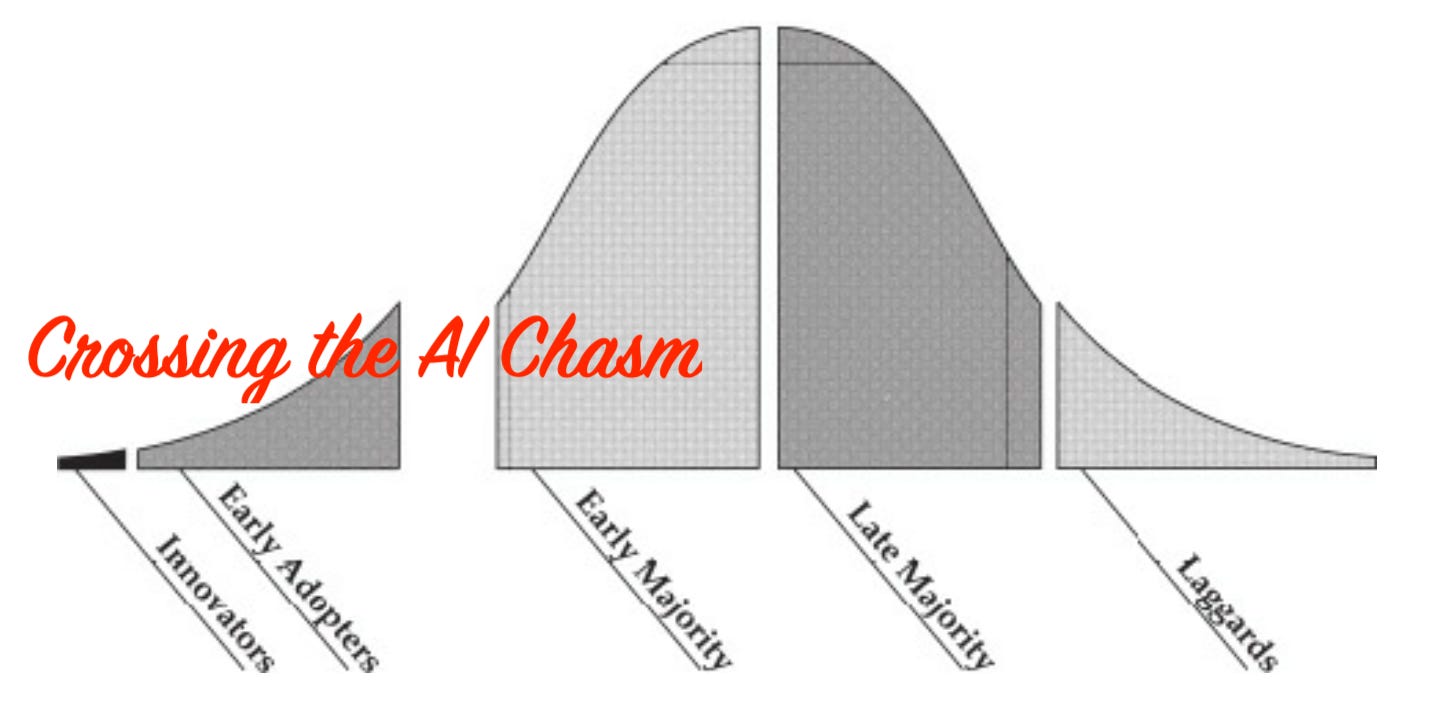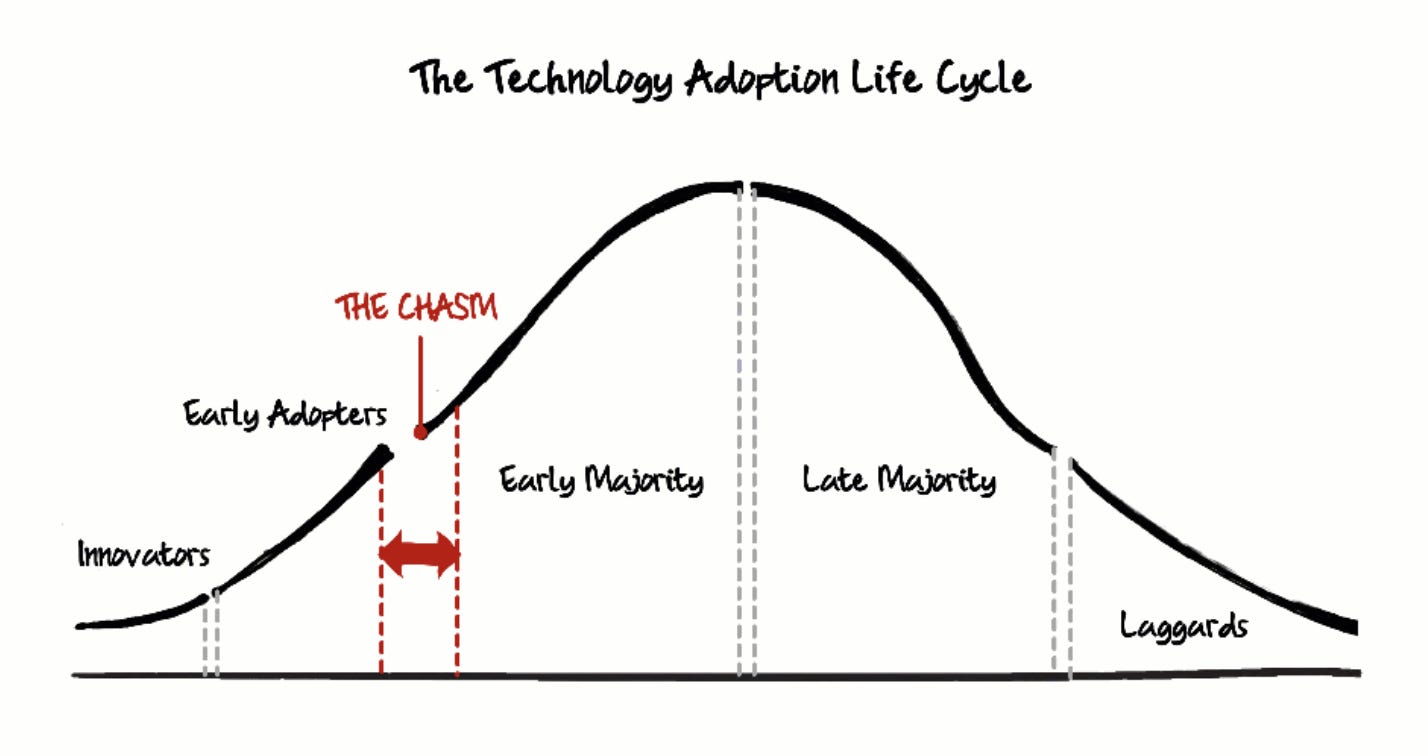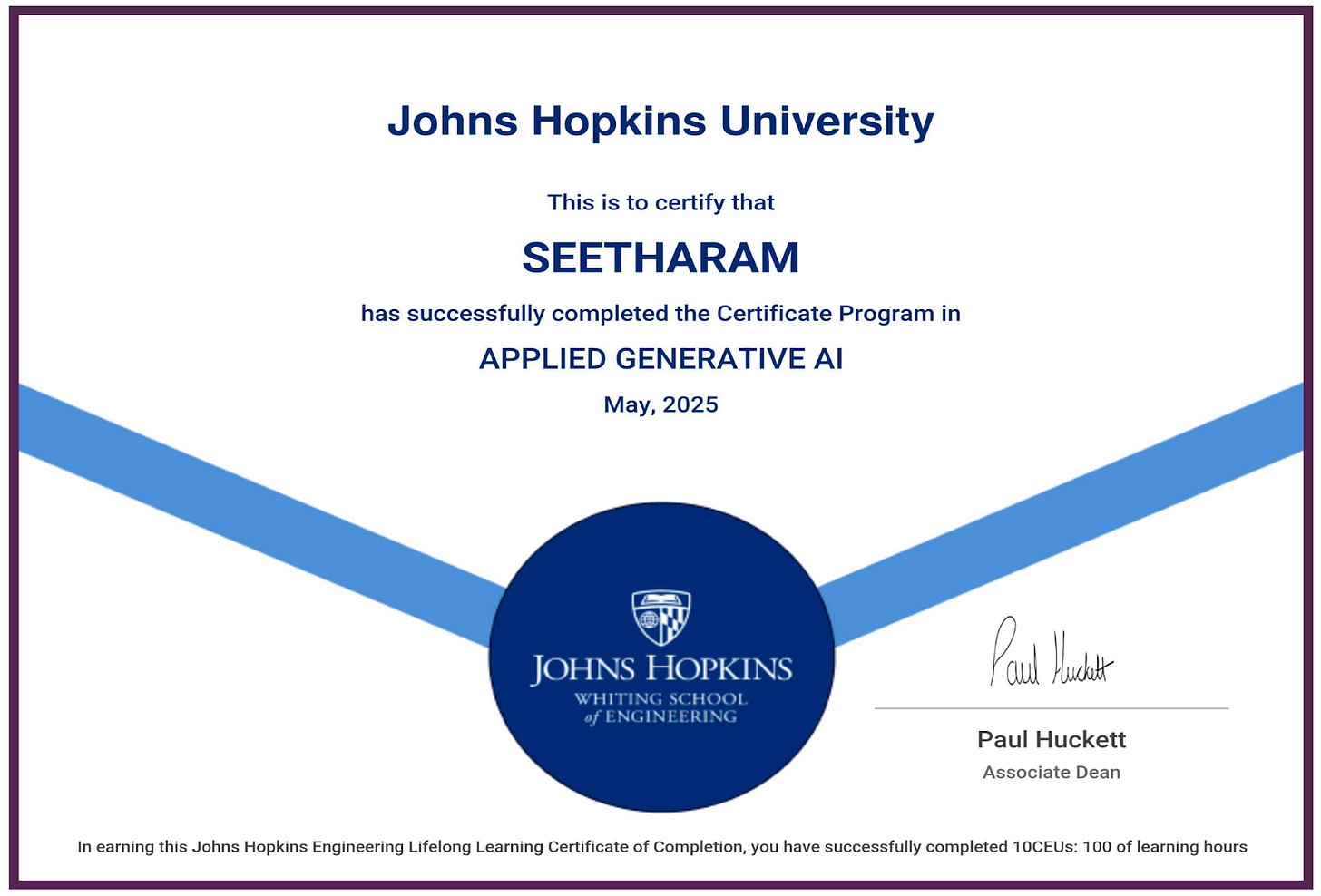From Delusion to Dominance: Crossing the AI Chasm
Crossing the chasm from curiosity to competence as a developer in the age of Generative AI
Introduction: The Delusion Around AI
We are surrounded by talk of AI. It shows up in product meetings, investor decks, roadmaps, weekend hacks, and every second LinkedIn post. But the more I listen, the clearer it becomes that many people are approaching AI with a subtle but dangerous kind of delusion.
There is this belief that simply using the latest tool makes one innovative. That if you prompt a chatbot or run an API call, you're somehow riding the wave. But real innovation does not come from access. It comes from intent. It comes from knowing what you want to build, and why, and how to make the tools work for you.
AI is not magic. It is not a black box that will figure things out for you. It is a tool. And like any powerful tool, it demands understanding, experimentation, and craftsmanship.
This post is about moving from delusion to something deeper. A state where we understand how AI works, where it fits, and how to use it to create value. I will share what I learned from a five-month course on Applied Generative AI, and I will also borrow from the ideas in Crossing the Chasm to make a case for how to adopt AI effectively, whether you are an individual contributor, a team lead, or an executive trying to make sense of it all.
Understanding the Nature of AI: Context, Attention, and Change
As a software developer, it helps to think of AI not as magic but as a system that works in ways we already understand. Large language models respond based on context, focus on what matters, and improve with feedback. These are not foreign ideas. They are the same principles we use when building and maintaining software. And they give us a useful way to think about how to bring AI into our work in a practical and effective way.
Start with context. Every LLM response depends heavily on the prompt and the surrounding information. As developers, we understand this. Whether we are debugging, writing an API, or reviewing a pull request, the outcome depends on understanding the context. The same is true when applying AI. You need to be clear about what problem you are trying to solve. Are you looking to generate code, refactor something, summarize logs, or review diffs? Without context, even the best model will give generic answers.
Next is attention. LLMs are built on the idea of attention. They focus on the most relevant parts of the input. Developers do this every day when scanning through code or triaging bugs. We do not look at every line. We know where to look first. The same idea applies to using AI. Instead of applying it everywhere, focus on one or two high-impact areas. Maybe it is speeding up documentation, maybe it is improving code quality checks. Figure out where the value is and start there.
Then comes change. Just like models improve through fine-tuning, we improve by iterating. Once you start using AI tools, you will find that your workflow begins to shift. You may change how you write unit tests, how you explore new libraries, or how you document code for others. These are not overnight changes. They come from daily use, trial and error, and the willingness to evolve.
AI is not something you bolt onto your workflow. It becomes part of how you think and work. And just like in software development, small changes over time can lead to major gains in productivity and quality.
Adopting AI: Crossing the Chasm
Adopting AI as a developer is not just about trying the latest tools. It is about knowing where we are in the adoption curve and what it takes to move forward. Geoffrey Moore’s Crossing the Chasm describes the gap between early adopters, those who experiment and explore, and the early majority, who look for predictable outcomes before making changes. With AI, we are in that in-between phase. Consistent adoption across most teams has not fully arrived. While some developers have already built AI into their workflow, many others are still on the sidelines, waiting to see what sticks.
A good way to move forward is to look at the software development lifecycle. AI can help across the board in writing and reviewing code, generating tests, debugging issues, improving documentation, summarizing design docs and tickets. These are not side projects but are core parts of how we work. You do not need a strategy deck or a company-wide AI charter to get started. You just need to pick one part of your day where AI can save you time or reduce friction.
Start small. Let AI draft your first test case or use it to summarize your pull request. Have it suggest edits for your README. If it helps, keep using it. If it doesn’t, move on. What matters is building your own intuition about where AI fits into your workflow. Adoption happens through repetition, not by mandate.
Crossing the chasm is not about chasing trends or waiting for Cursor or Windsurf licenses. It is about finding real use cases that solve actual problems. When your teammates see that AI helps you write better code or review faster, they will ask what you are doing differently. Adoption spreads through visible wins that others can trust.
The goal is not to chase AI for the sake of it. The goal is to get good at using it where it matters.
A Personal Journey: Learning by Doing
That mindset guided my own journey. I did not begin as an AI expert. I learned by getting close to the problems, staying curious, and finding the right places to start. I got my first exposure to machine learning while working with the Recommendations team at Peloton. I had no background in this space but learned by collaborating with the team on MLOps. You do not need to be an expert in ML or AI to start learning. There are many adjacent areas where you can begin before diving into the deeper layers of AI. My initial work in MLOps gave me access to the people, systems, and tools that powered real-world ML applications.
Since then, I have continued to build my understanding by working hands-on and keeping up with the evolving trends. Late last year, when I took on a role involving Generative AI, I knew I needed a structured way to get up to speed. While many universities offered programs, most were tied closely to specific cloud platforms like AWS, GCP, or Azure. Those are valuable if you are working within those ecosystems, but I was looking for something cloud-agnostic that focused on core concepts and capabilities.
After some digging, I enrolled in the Applied Generative AI certification program from Johns Hopkins University. It was exactly what I needed. The course covered a broad spectrum — starting with Python and its application to Generative AI, and progressing into the mechanics of Large Language Models and machine learning. I learned prompt engineering, explored how to build agents with LangChain to automate tasks, and spent a good portion of time understanding Retrieval Augmented Generation. I explored everything from embeddings and tokenization to advanced RAG architectures that improve relevance and accuracy.
The course ended with a capstone project where I built a secure, fine-tuned RAG system with a strong emphasis on responsible AI practices — from mitigating bias to protecting data privacy. The journey wasn’t theoretical. It was about gaining fluency. It was about learning to think with AI and build with AI.
Conclusion: Learn to Surf
I like to quote Jon Kabat-Zinn in this context: “You can’t stop the waves, but you can learn to surf.” That is exactly how I see the current state of AI. The wave is already here. As software engineers, we are not just observers. We are right in it. If you are not using AI in your daily work, you are already behind. AI will not write a custom Java memory manager or build the next DynamoDB from scratch yet, but it can take care of mundane tasks so you can focus on what matters.
I have been a software engineer for a long time, and I can honestly say this is one of the most exciting phases in our field. The pace is intense. I struggle to keep up with my personal life sometimes because I am so invested in learning, building, and sharing what I know about AI. The developments around Agentic AI, advanced RAGs, MCP, and A2A remind me of how REST and gRPC once redefined how we built and connected systems. Some of this feels like old wine in a new bottle, but it is here to open the next round of opportunity, visibility, and career growth.
The pressure to adapt is real. It is not just a career risk. It is a business risk. History is full of companies that failed to adapt to new technology and eventually faded away. AI is already disrupting traditional areas like customer support, education, and content creation to name a few. Some businesses will lose relevance simply because they chose not to engage with the change.
Start small. Learn by doing. Find your use cases. Help your team. Share what works. We do not need to fear the AI wave. We just need to learn to surf.






